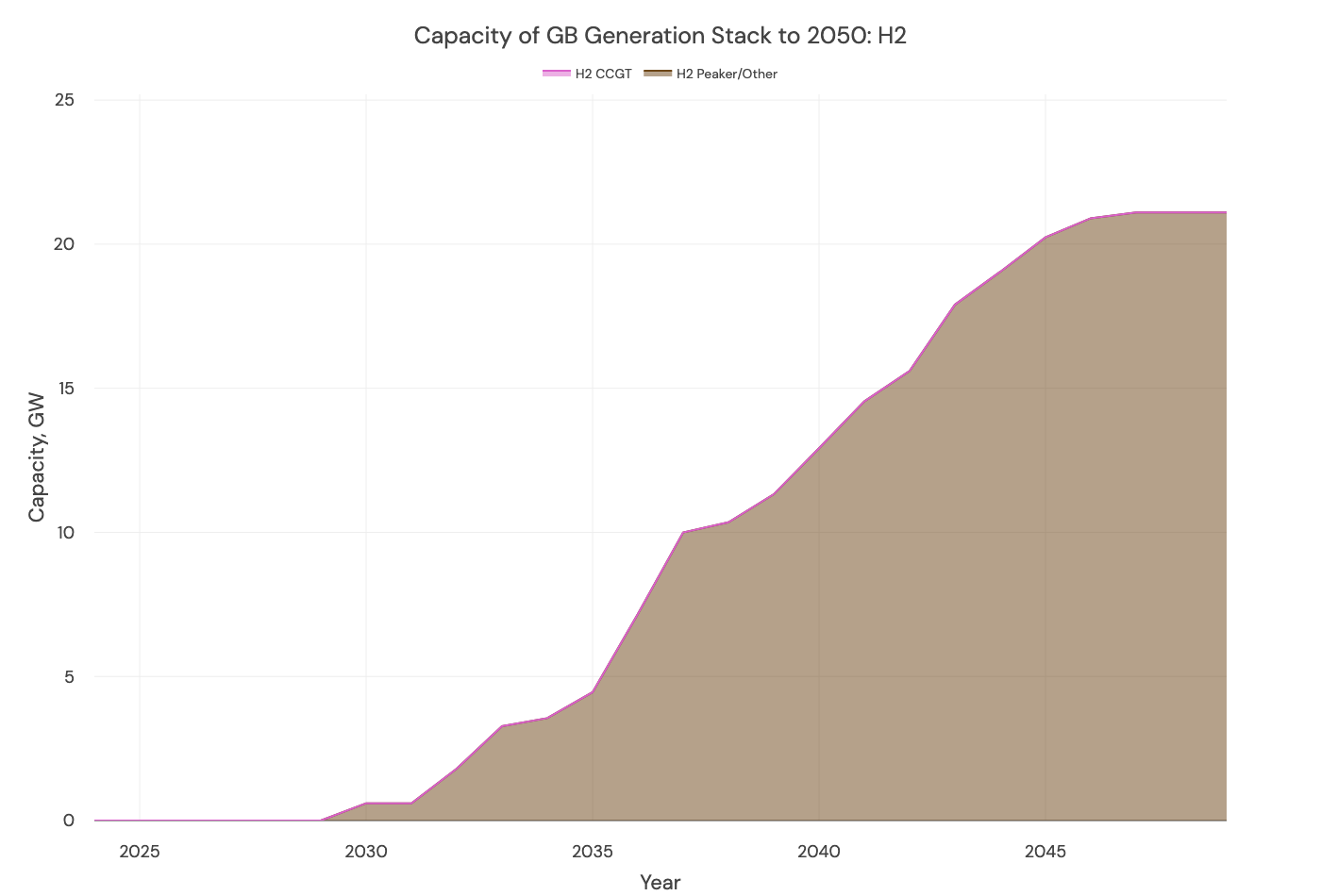Hydrogen
We have no baseload hydrogen, only peaking.

Our hydrogen assumptions come from the FES 2023 consumer transformation scenario, which has less hydrogen than the alternative 'System Transformation' scenario. We assume all this is in the peaking plant only and will be built close to hydrogen hubs—for example, in the Humber region and Merseyside.
We don't think hydrogen will be a significant part of the future power system
Other bodies that examine the future of the electricity system may disagree, but we think green hydrogen—hydrogen produced by electrolyzing water using renewable electricity—would be a brilliant way to decarbonize heavy industrial processes that use a lot of fossil-produced hydrogen today (steel, fertilizer, refineries). We don't think using it for baseload power generation makes sense.
The Committee on Climate Change says 25 GW of Hydrogen CCGTs will exist on the system by 2035, producing power for £100/MWh.
2035 is 12 years away: very soon, for a brand-new, untested technology to operate commercially at scale. Today, the only turbines being built can handle a hydrogen blend of, generously, no more than 50% (which only leads to a 7% carbon reduction due to hydrogen's low calorific value and large volume). Burn more than that, and instabilities in the way hydrogen burns lead to issues, and excessive nitrogen oxides (NOx) are produced. The round-trip efficiency of making it using electricity, transporting and storing it safely, and then burning it again to make steam to turn a turbine is just far too low (~25%, depending on the methods used). There are huge uncertainties in the cost of making, transporting and storing hydrogen.
There are many unknowns for hydrogen at scale
There is no track record for any Operations and Maintenance for hydrogen turbines, no supply chain, and no full-scale 100% operational hydrogen plants. There is no fuel source for a large supply of green hydrogen - most electrolyzers are still fairly small and have reliability issues. Electrolyzers, too, are a relatively early-stage technology. Storage and transport of hydrogen also present all manner of leakage and safety issues. And that's before we consider the grid connections needed to connect 25GW into the network when there is such a struggle to get connections, with many new connections having dates post-2035.
If we get a large injection of subsidy into the sector, it will probably change things, and we'll update the next version of the forecast.
(Michael Liebrich's Hydrogen ladder explains this much better than us!)
Updated about 2 months ago